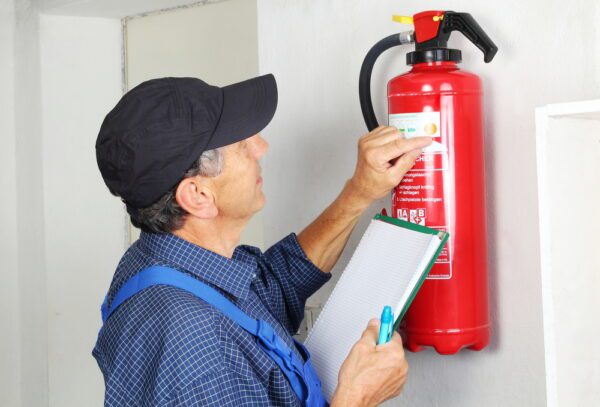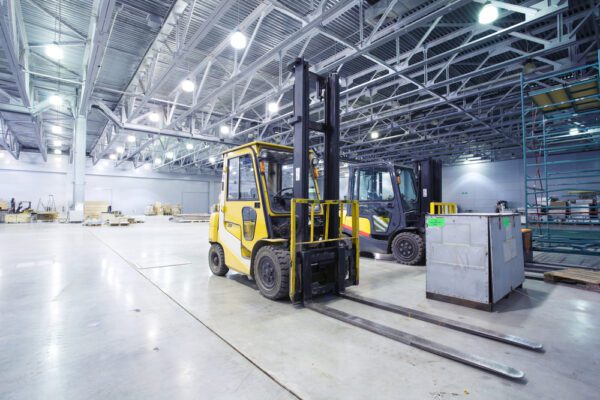
In today’s complex industrial environments, organizations rely on a range of maintenance strategies to keep assets running efficiently and reliably. While investments in condition-monitoring and artificial intelligence-assisted predictive analysis are on the rise, simple time-based maintenance (TbM) is still widely used. In this article, we explore what time-based maintenance is and where it fits within broader maintenance strategies.
What is Time-based Maintenance?
Time-based maintenance (TbM) is a preventive maintenance strategy where maintenance tasks are performed at fixed time intervals based on an asset’s expected lifespan. This approach is based on the idea that failures are predictable and occur at regular frequencies. Depending on the asset, type of failure, and risk, intervals may be days, weeks, months, and even years. Time-based maintenance is also referred to as periodic maintenance or calendar-based maintenance.
Time-based maintenance is used as a way to balance the cost of frequent maintenance with the cost of unplanned downtime by carefully selecting appropriate maintenance intervals. These intervals may be derived from manufacturer recommendations, work order history, regulatory maintenance standards, and performance metrics like Mean Time Between Failures (MTBF).
Check out our article about asset management KPIs.
The goal is to find a sweet spot between too much and too little maintenance. Over-maintenance leads to unnecessary downtime, wasted time, and increased labor costs and part usage. Additionally, frequent interactions with equipment increase the risk of human error, which can reduce reliability. Under-maintenance causes problems to go unnoticed, leading to more severe – and usually more costly – failures.
Time-based Maintenance (TbM) vs. Condition-based Maintenance (CbM)
When it comes to proactively preventing equipment failures, organizations are often faced with the decision of using time-based or condition-based maintenance. Each strategy aims to service equipment before failures occur, but differ in how they determine when to perform maintenance.
Time-based maintenance (TbM) is performed on fixed intervals, regardless of the equipment’s actual physical condition. It is often used as a starting point for preventive maintenance because it is low cost and simple to schedule. A similar strategy is usage-based maintenance, which triggers maintenance based on equipment’s operating time instead of time intervals.
Condition-based maintenance (CbM) is performed based on equipment’s actual condition using data collected through condition-monitoring sensors. It is an advanced, data-driven strategy that allows organizations to schedule maintenance only when equipment is showing signs of decreased performance or imminent failure. While more precise than time-based maintenance, it requires more advanced infrastructure and upfront investment.
Learn more about condition-based maintenance.
Examples of Time-Based Maintenance

Periodic maintenance is required to keep assets in proper operating condition. Time-based maintenance examples include:
- Inspecting safety shut-off systems monthly
- Cleaning HVAC coils quarterly
- Testing emergency lighting and alarms every month
- Replacing air filters annually
- Inspecting rooftop air handlers seasonally
Benefits of Time-Based Maintenance
Time-based maintenance offers a straightforward, non-technical approach to preventive maintenance. This simplicity provides many benefits to maintenance teams:
- Predictable Schedules: TbM follows a strict time interval, making maintenance activities consistent and easy to plan.
- Ease of Implementation: Compared to more advanced strategies like condition-based maintenance, TbM does not require additional infrastructure to support maintenance activities.
- Less Unplanned Downtime: As a form of preventive maintenance, TbM addresses minor issues before they progress into more costly breakdowns.
- Simplified Procurement: Parts used in TbM have predictable demand, which makes inventory management and ordering easier.
- Effective for Continuously Running Assets: Wear and tear is more predictable for assets that run continuously, allowing maintenance work to be scheduled at regular intervals.
- Supports Regulatory Compliance: Regular inspections help meet legal or industry standards.
- Requires Minimal Staffing or Technical Skill: Maintenance is performed on a fixed schedule, so technicians don’t need advanced diagnostics or specialized training to determine when service is needed.
Ideal for: Time-based maintenance is best for standalone equipment or equipment with only one critical component, such as HVAC units, generators, and conveyor belt motors.
Limitations of Time-based Maintenance
Despite its benefits, time-based maintenance should not be used as the sole maintenance strategy. Organizations that rely too heavily on TbM may face the following challenges:
- Misplaced Focus on Failure Causes: According to Reliability Academy, most equipment failures are not age-related. This means that time-based maintenance may not effectively prevent many types of failures and should be supplemented with other maintenance approaches.
- Increased Risk from Over-Maintenance: Performing maintenance too frequently introduces unnecessary risk such as incorrect reassembly, misalignment, or human error, which can lead to unexpected failures.
- Higher Failure Rates Due to Under-Maintenance: Infrequent maintenance increases the risk of avoidable breakdowns, especially for assets with predictable wear patterns.
- Ineffective for Infrequently Used Assets: Assets that are used intermittently do not degrade at the same rate as continuously running equipment. For these, time-based maintenance may result in over-maintenance or wasted resources.
- Increased Costs from Unnecessary Maintenance: Servicing equipment that doesn’t require it leads to unnecessary downtime, labor costs, and use of spare parts or consumables.
For these reasons, time-based maintenance is best used in combination with other strategies such as condition-based or predictive maintenance (PdM) as part of a comprehensive preventive maintenance program.
Further Reading: Keeping Assets Healthy: A Complete Guide to 4 Types of Maintenance
When to Use Time-based Maintenance

How can time-based maintenance fit into your current maintenance strategy? According to a recent study, TbM is a practical choice for equipment that functions as a standalone unit and has predictable failure patterns. It is ideal for assets that have consistent wear and tear, making it easy to schedule maintenance without advanced condition monitoring tools. While TbM is effective in these cases, it should be part of a broader maintenance strategy that accounts for other types of failures.
How a CMMS Supports a TbM Strategy
A computerized maintenance management system (CMMS) is a powerful tool for managing your time-based maintenance strategy by leveraging automated work order scheduling and management features. Here are some ways a CMMS supports TbM:
- Robust Asset Tracking: Maintain visibility of your maintainable assets, their condition, and service history.
- Work Order Scheduling: Create a custom, time-based maintenance schedule for each piece of equipment.
- Automatic Work Order Generation: Automatically create work orders using calendar-based or usage-based triggers.
- Maintenance Analytics: Use reports and dashboards to analyze maintenance activity, track KPIs, and determine optimal maintenance intervals.
- On-the-go Access: Empower your team to be more productive by providing access to work orders from mobile devices.
As your maintenance program matures, a CMMS can also support your transition to more advanced strategies, ensuring your system grows with your needs.
Schedule Timely Maintenance with FTMaintenance Select
Despite its simplicity, time-based maintenance is the foundation of many organizations’ preventive maintenance strategies. When managed well, it reduces downtime, extends asset life, and keeps operations running smoothly. FTMaintenance Select CMMS is preventive maintenance software that allows you to optimize your maintenance frequency through flexible calendar- and usage-based scheduling options. Work orders are automatically generated according to your preset schedule, ensuring no maintenance tasks fall through the cracks. Request a demo of FTMaintenance Select to see how you can put time-based maintenance into action.